Hydration Properties of Cement with Liquefied Red Mud Neutralized by Nitric Acid
Abstract
1. Introduction
2. Materials and Methods
2.1. Materials
2.2. Cement Paste
2.3. Methods
3. Results and Discussion
3.1. Compressive Strength
3.2. Hydration Heat
3.3. XRD
3.4. TG-DTG
4. Conclusions
- The compressive strength of the LRMN samples, particularly after 1 day of aging, was higher than those of the LRM samples, suggesting the role of LRM + N in improving the strength of the cement paste at early ages. In addition, the compressive strength of LRMN 10 at 28 days was similar to that of Plain.
- The LRMN samples had hydration heat peaks closer to those of Plain than the LRM samples. In particular, the peaks related to the hydration products were significantly different for the LRMN and LRM samples.
- XRD peaks corresponding to portlandite were observed for the LRMN samples after 12 h of aging, while they were observed after 3 days of aging for the LRM samples.
- The TG curves of the LRMN samples were similar to that of Plain and the DTG peak related to portlandite decomposition became clear after 12 h of aging. However, for the LRM samples, this peak did not appear until 28 days of aging. This shows that the hydration product of the LRMN sample is similar to that of the Plain.
Author Contributions
Funding
Institutional Review Board Statement
Informed Consent Statement
Data Availability Statement
Conflicts of Interest
References
- Lima, M.S.; Thives, L.P. Evaluation of red mud as filler in Brazilian dense graded asphalt mixtures. Constr. Build. Mater. 2020, 260, 119894. [Google Scholar] [CrossRef]
- Menzie, W.D.; Barry, J.J.; Bleiwas, D.I.; Bray, E.L.; Goonan, T.G.; Matos, G. The Global Flow of Aluminum from 2006 through 2025; U.S. Department of the Interior: Reston, VI, USA; Washington, DC, USA; US Geological Survey: Reston, VI, USA; Washington, DC, USA, 2010.
- Liu, X.; Zhang, N.; Yao, Y.; Sun, H.; Feng, H. Micro-structural characterization of the hydration products of bauxite-calcination-method red mud-coal gangue based cementitious materials. J. Hazard. Mater. 2013, 262, 428–438. [Google Scholar] [CrossRef]
- Hildebrando, E.A.; Souza, J.A.D.S.; Angélica, R.S.; Neves, R.D.F. Application of bauxite waste from Amazon region in the heavy clay industry. Mater. Res. 2013, 16, 1418–1422. [Google Scholar] [CrossRef]
- Yang, X.; Zhao, J.; Li, H.; Zhao, P.; Chen, Q. Recycling red mud from the production of aluminium as a red cement-based mortar. Waste Manag. Res. 2017, 35, 1–8. [Google Scholar] [CrossRef] [PubMed]
- Power, G.; Gräfe, M.; Klauber, C. Bauxite residue issues: I. Current management, disposal and storage practices. Hydrometallurgy 2011, 108, 33–45. [Google Scholar] [CrossRef]
- Liu, Y.; Qin, Z.; Chen, B. Experimental research on magnesium phosphate cements modified by red mud. Constr. Build. Mat. 2020, 231, 117131. [Google Scholar] [CrossRef]
- Grafe, M.; Power, G.; Klauber, C. Bauxite residue issues: III. Alkalinity and associated chemistry. Hydrometallurgy 2011, 108, 60–79. [Google Scholar] [CrossRef]
- Liu, S.; Guan, X.; Zhang, S.; Dou, Z.; Feng, C.; Zhang, H.; Luo, S. Sintered Bayer red mud based ceramic bricks: Microstructure evolution and alkalis immobilization mechanism. Ceram. Int. 2017, 43, 13004–13008. [Google Scholar] [CrossRef]
- He, J.; Jie, Y.; Zhang, J.; Yu, Y.; Zhang, G. Synthesis and characterization of red mud and rice husk ash-based geopolymer composites. Cem. Concr. Compos. 2013, 37, 108–118. [Google Scholar] [CrossRef]
- Barbhuiya, S.A.; Basheer, P.A.M.; Clark, M.W.; Rankin, G.I.B. Effects of seawater-neutralised bauxite refinery residue on properties of concrete. Cem. Concr. Compos. 2011, 33, 668–679. [Google Scholar] [CrossRef]
- Díaz, B.; Freire, L.; Nóvoa, X.R.; Pérez, M.C. Chloride and CO2 transport in cement paste containing red mud. Cem. Concr. Compos. 2015, 62, 178–186. [Google Scholar] [CrossRef]
- Nikbin, I.M.; Aliaghazadeh, M.; Charkhtab, S.H.; Fathollahpour, A. Environmental impacts and mechanical properties of lightweight concrete containing bauxite residue (red mud). J. Clean. Prod. 2018, 172, 2683–2694. [Google Scholar] [CrossRef]
- Choe, G.; Kang, S.; Kang, H. Mechanical properties of concrete containing liquefied red mud subjected to uniaxial compression loads. Materials 2020, 13, 854. [Google Scholar] [CrossRef]
- Liu, X.; Zhang, N.; Sun, H.; Zhang, J.; Li, L. Structural investigation relating to the cementitious activity of bauxite residue–red mud. Cem. Concr. Res. 2011, 41, 847–853. [Google Scholar] [CrossRef]
- Kang, S.; Kang, H.; Lee, B. Effects of adding neutralized red mud on the hydration properties of cement paste. Materials 2020, 13, 4107. [Google Scholar] [CrossRef] [PubMed]
- Aggoun, S.; Cheikh-Zouaoui, M.; Chikh, N.; Duval, R. Effect of some admixtures on the setting time and strength evolution of cement pastes at early ages. Constr. Build. Mater. 2008, 22, 106–110. [Google Scholar] [CrossRef]
- Suh, J.-I.; Yum, W.S.; Song, H.; Park, H.-G.; Oh, J.E. Influence of calcium nitrate and sodium nitrate on strength development and properties in quicklime (CaO)-activated Class F fly ash system. Mater. Struct. 2019, 52, 115. [Google Scholar] [CrossRef]
- Zheng, Z.; Li, Y.; Zhang, Z.; Ma, X. The impacts of sodium nitrate on hydration and microstructure of Portland cement and the leaching behavior of Sr2+. J. Hazard. Mater. 2020, 388, 121805. [Google Scholar] [CrossRef]
- Li, Z.; Afshinnia, K.; Rangaraju, P.R. Effect of alkali content of cement on properties of high performance cementitious mortar. Constr. Build. Mater. 2016, 102, 631–639. [Google Scholar] [CrossRef]
- Kerui, Y.; Caiwen, Z.; Zhigang, L. The influence of calcium lignosulphonate–sodium bicarbonate on the status of ettringite crystallization in fly ash cement paste. Cem. Concr. Res. 2002, 32, 51–56. [Google Scholar] [CrossRef]
- Ortega, J.; Cabeza, M.; Tenza-Abril, A.J.; Real, T.; Climent, M.Á.; Sánchez, I. Effects of red mud addition in the microstructure, durability and mechanical performance of cement mortars. Appl. Sci. 2019, 9, 984. [Google Scholar] [CrossRef]
- Kim, H.Y. Urea additives for reduction of hydration heat in cement composites. Constr. Build. Mater. 2017, 156, 790–798. [Google Scholar] [CrossRef]
- Kunther, W.; Lothenbach, B.; Scrivener, K. Influence of bicarbonate ions on the deterioration of mortar bars in sulfate solutions. Cem. Concr. Res. 2013, 44, 77–86. [Google Scholar] [CrossRef]
- Choe, G.; Kang, S.; Kang, H. Characterization of slag cement mortar containing nonthermally treated dried red mud. Appl. Sci. 2019, 9, 2510. [Google Scholar] [CrossRef]
- Liu, R.-X.; Poon, C.-S. Utilization of red mud derived from bauxite in self-compacting concrete. J. Clean. Prod. 2016, 112, 384–391. [Google Scholar] [CrossRef]
- Venkatesh, C.; Nerella, R.; Chand, M.S.R. Role of red mud as a cementing material in concrete: A comprehensive study on durability behavior. Innov. Infrastruct. Solut. 2021, 6, 1–14. [Google Scholar] [CrossRef]
- He, Y.; Zhang, X.; Liu, S.; Hooton, R.; Ji, T.; Kong, Y. Impacts of sulphates on rheological property and hydration performance of cement paste in the function of polycarboxylate superplasticizer. Constr. Build. Mater. 2020, 256, 119428. [Google Scholar] [CrossRef]
- Hou, D.; Wu, D.; Wang, X.; Gao, S.; Yu, R.; Li, M.; Wang, P.; Wang, Y. Sustainable use of red mud in ultra-high performance concrete (UHPC): Design and performance evaluation. Cem. Concr. Compos. 2021, 115, 103862. [Google Scholar] [CrossRef]
- Alhozaimy, A.; Fares, G.; Al-Negheimish, A.; Jaafar, M.S. The autoclaved concrete industry: An easy-to-follow method for optimization and testing. Constr. Build. Mater. 2013, 49, 184–193. [Google Scholar] [CrossRef]
- Rai, S.; Lataye, D.H.; Chaddha, M.J.; Mishra, R.S.; Mahendiran, P.; Mukhopadhyay, J.; Yoo, C.K.; Wasewar, K.L. An alternative to clay in building materials: Red mud sintering using fly ash via Taguchi’s methodology. Adv. Mater. Sci. Eng. 2013. [Google Scholar] [CrossRef]

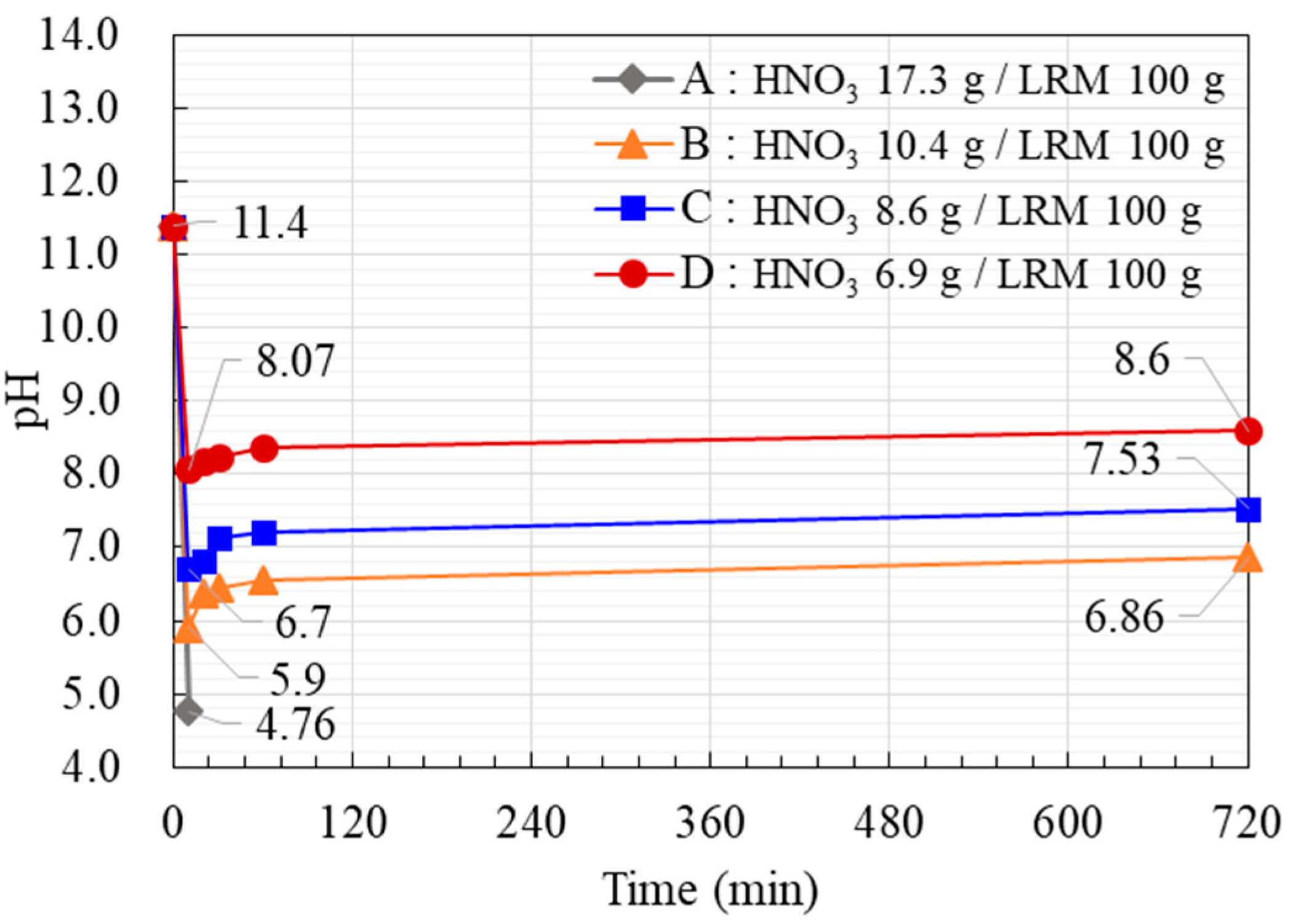
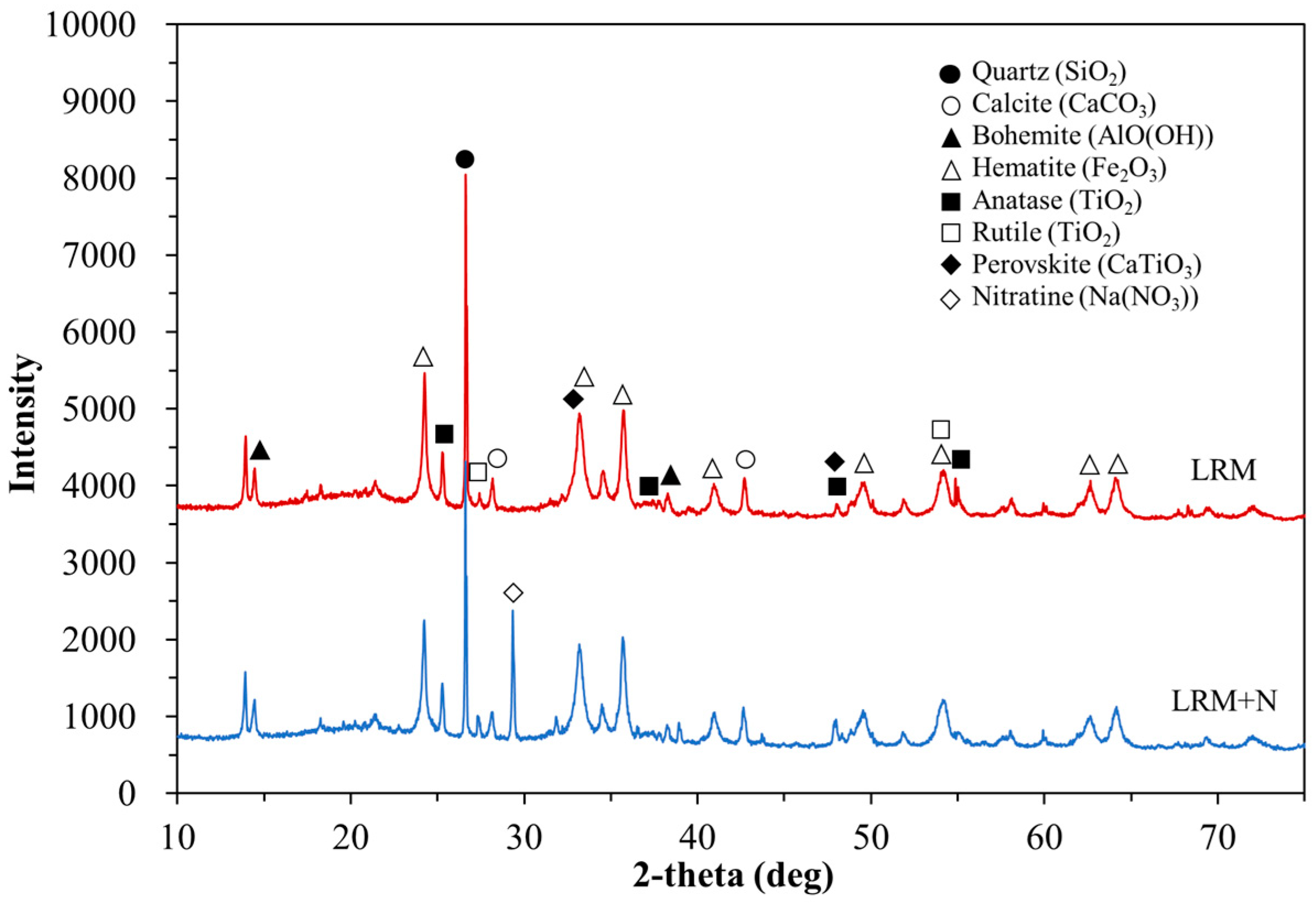

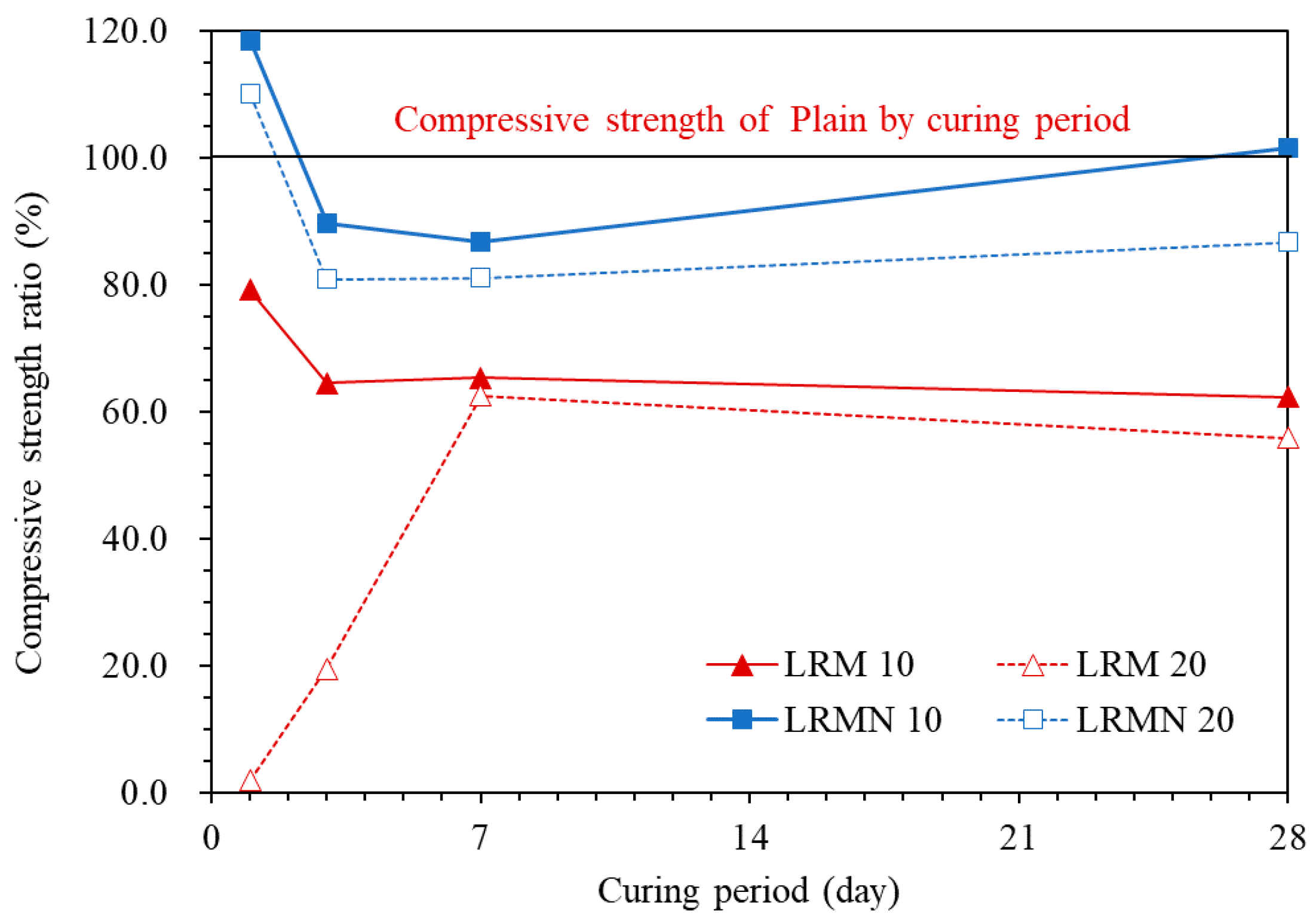
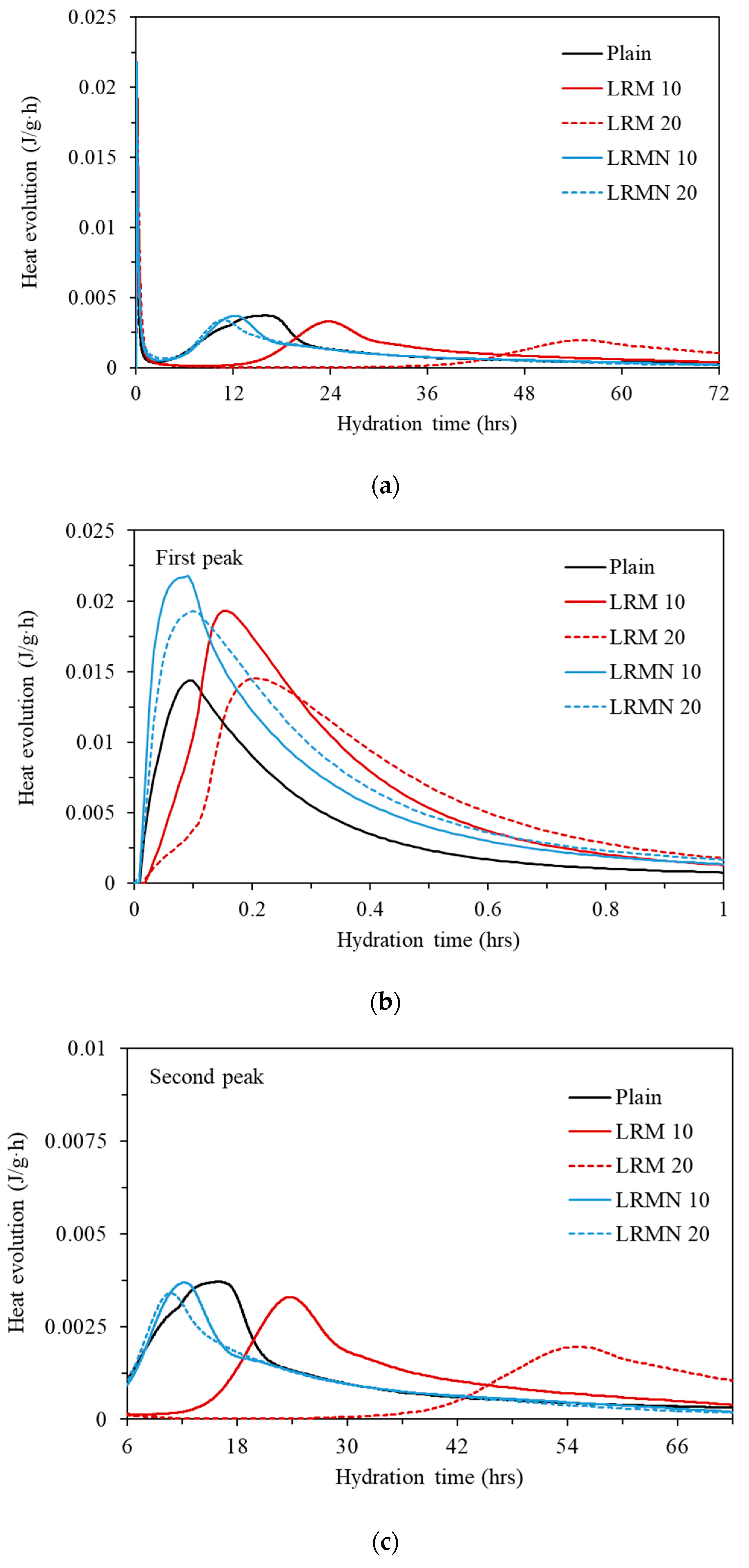

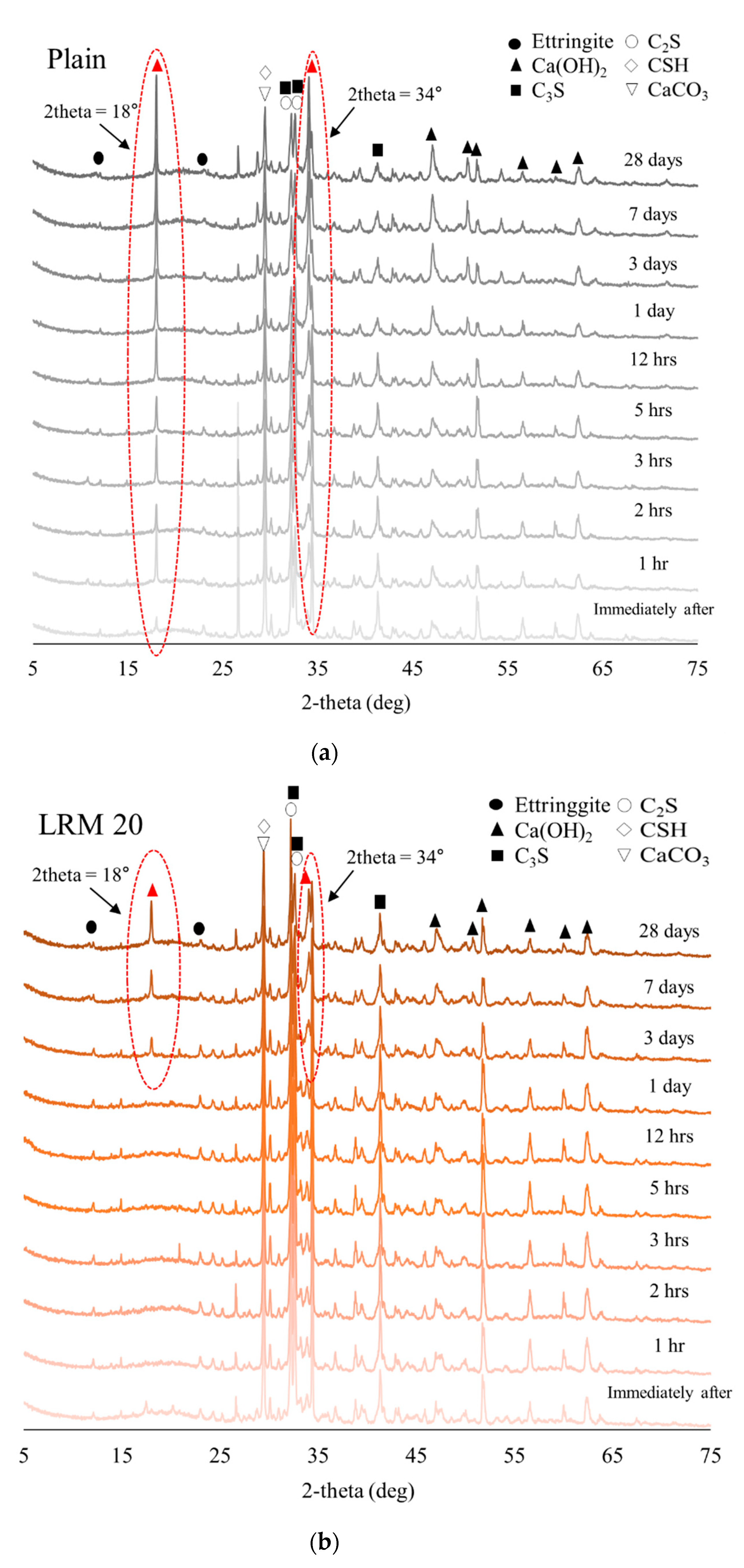
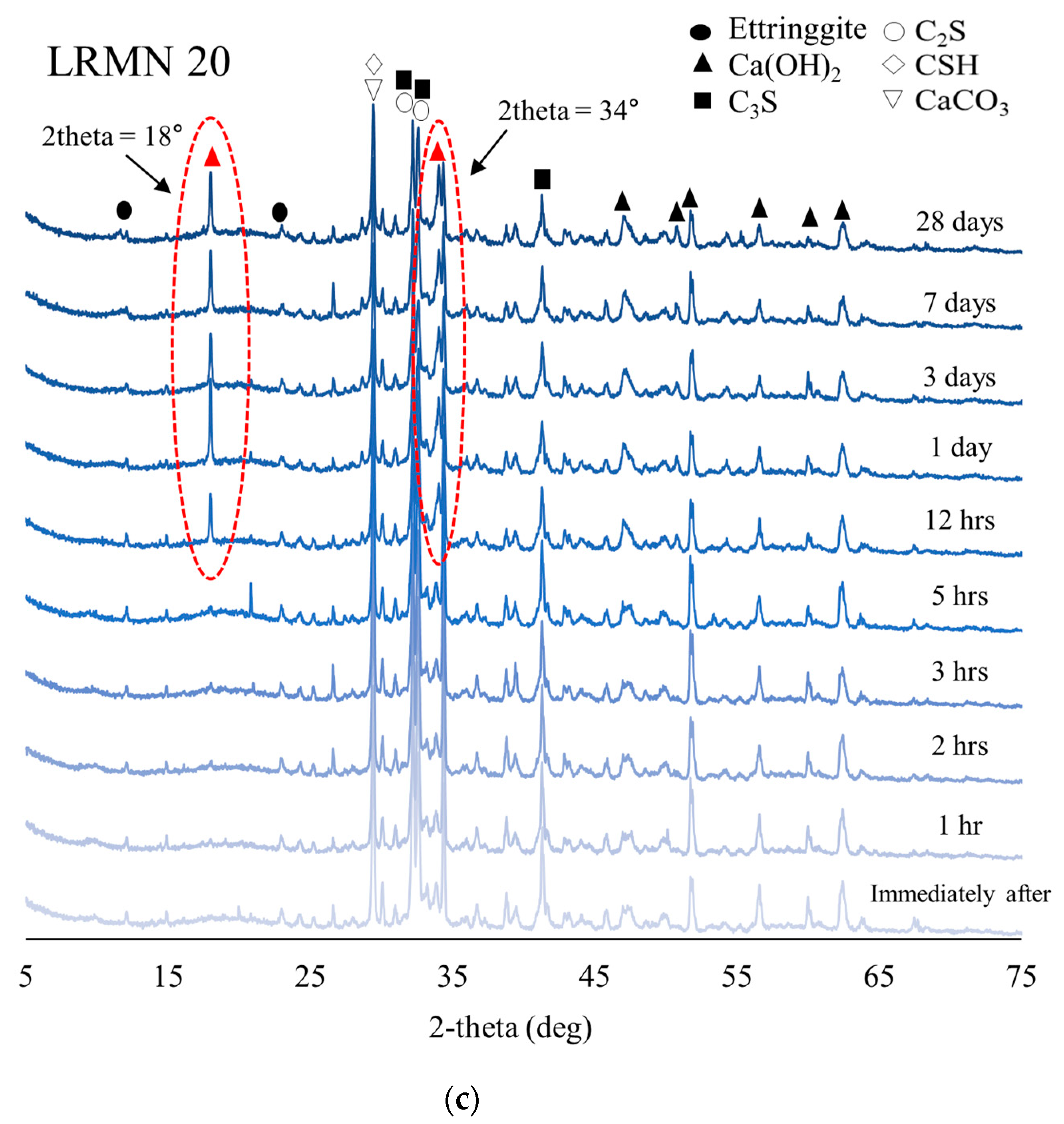
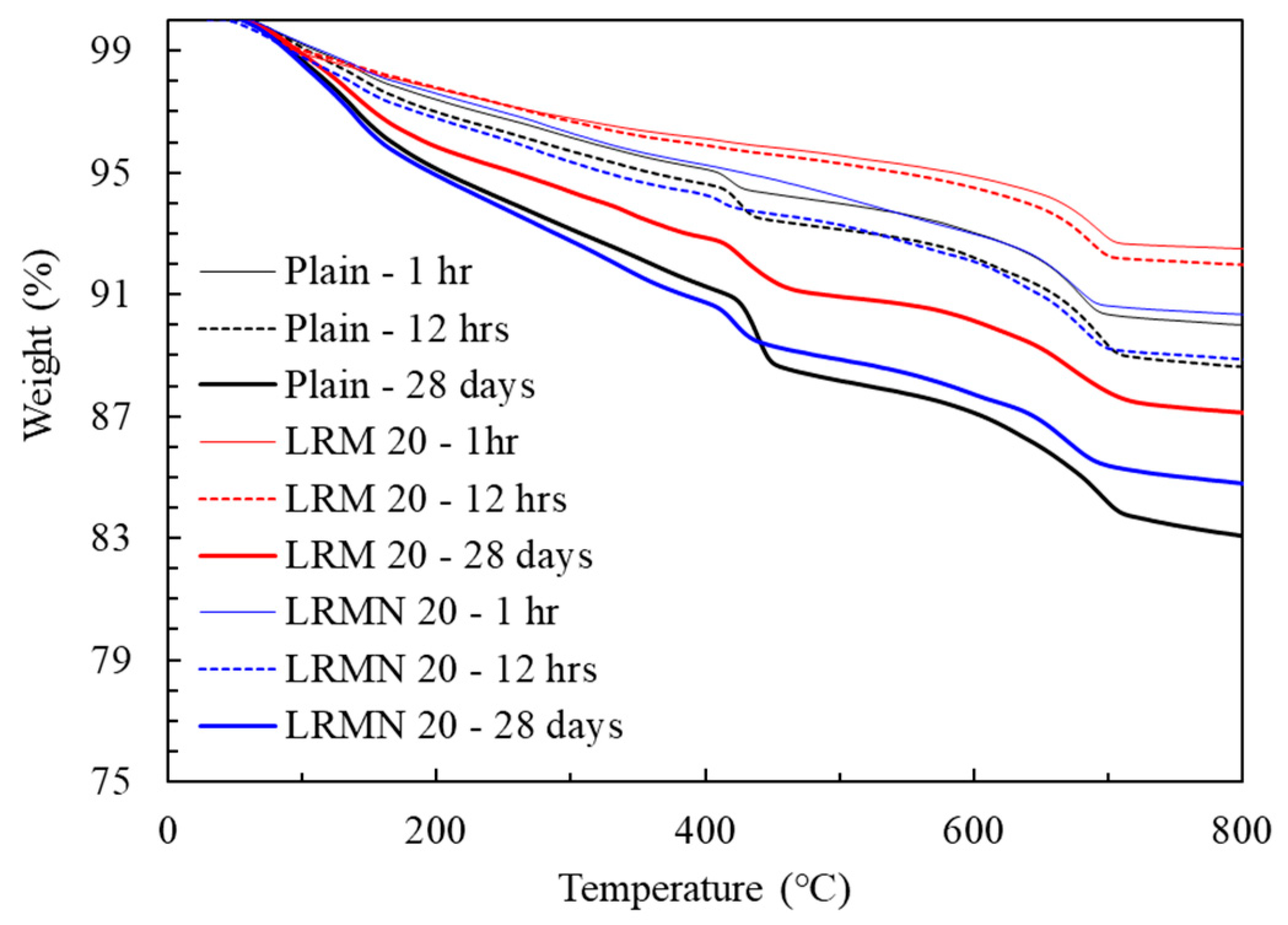
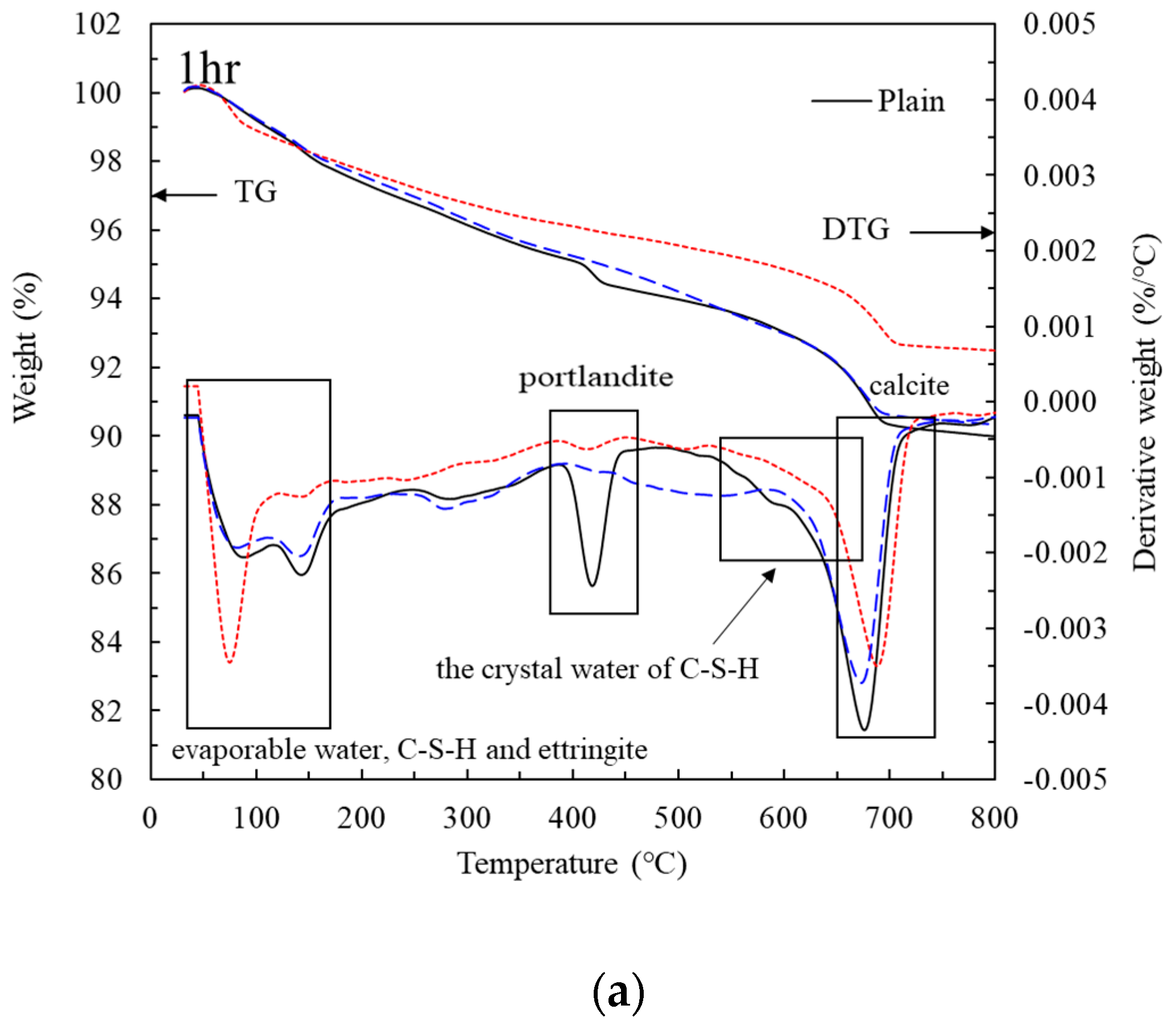
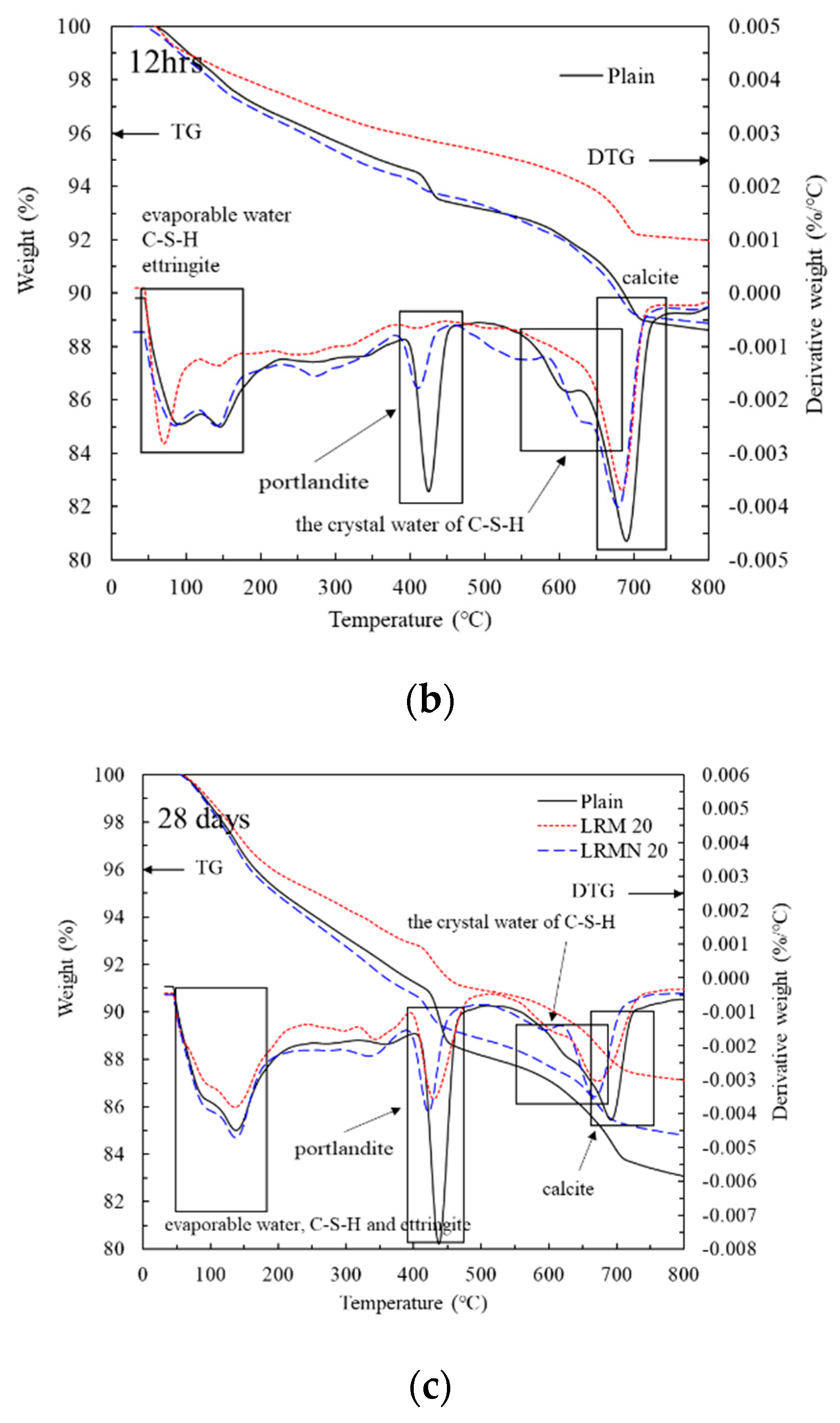
| Type of Red Mud | Moisture Content (%) | pH | Density (g/cm3) | Specific Surface Area (cm2/g) | Average Particle Diameter (μm) | Viscosity (cP) |
|---|---|---|---|---|---|---|
| LRM * | 49.5 | 11.5 | 1.50 | 2353 | 2.75 | 42550 |
| LRM + N ** | 48.7 | 7.5 | 1.50 | 2353 | 2.75 | 43650 |
| Blaine Fineness (cm2/g) | Setting Time | Density (g/cm3) | Chemical Composition (%) | |||||||
|---|---|---|---|---|---|---|---|---|---|---|
| Initial (min) | Final (h) | SiO2 | Al2O3 | Fe2O3 | CaO | MgO | SO3 | Ig-loss | ||
| 3300 | 200 | 5.5 | 3.15 | 21.7 | 5.7 | 3.2 | 63.1 | 2.8 | 2.2 | 2.44 |
| Mixture ID | Water/Cement Ratio | Additional Component | |
|---|---|---|---|
| LRM/Cement (wt.%) | LRM + N/Cement (wt.%) | ||
| Plain | 0.3 | - | - |
| LRM 10 | 10 | - | |
| LRM 20 | 20 | - | |
| LRMN 10 | - | 10 | |
| LRMN 20 | - | 20 | |
Publisher’s Note: MDPI stays neutral with regard to jurisdictional claims in published maps and institutional affiliations. |
© 2021 by the authors. Licensee MDPI, Basel, Switzerland. This article is an open access article distributed under the terms and conditions of the Creative Commons Attribution (CC BY) license (https://creativecommons.org/licenses/by/4.0/).
Share and Cite
Kang, S.; Kang, H.; Lee, B. Hydration Properties of Cement with Liquefied Red Mud Neutralized by Nitric Acid. Materials 2021, 14, 2641. https://doi.org/10.3390/ma14102641
Kang S, Kang H, Lee B. Hydration Properties of Cement with Liquefied Red Mud Neutralized by Nitric Acid. Materials. 2021; 14(10):2641. https://doi.org/10.3390/ma14102641
Chicago/Turabian StyleKang, Sukpyo, Hyeju Kang, and Byoungky Lee. 2021. "Hydration Properties of Cement with Liquefied Red Mud Neutralized by Nitric Acid" Materials 14, no. 10: 2641. https://doi.org/10.3390/ma14102641
APA StyleKang, S., Kang, H., & Lee, B. (2021). Hydration Properties of Cement with Liquefied Red Mud Neutralized by Nitric Acid. Materials, 14(10), 2641. https://doi.org/10.3390/ma14102641






